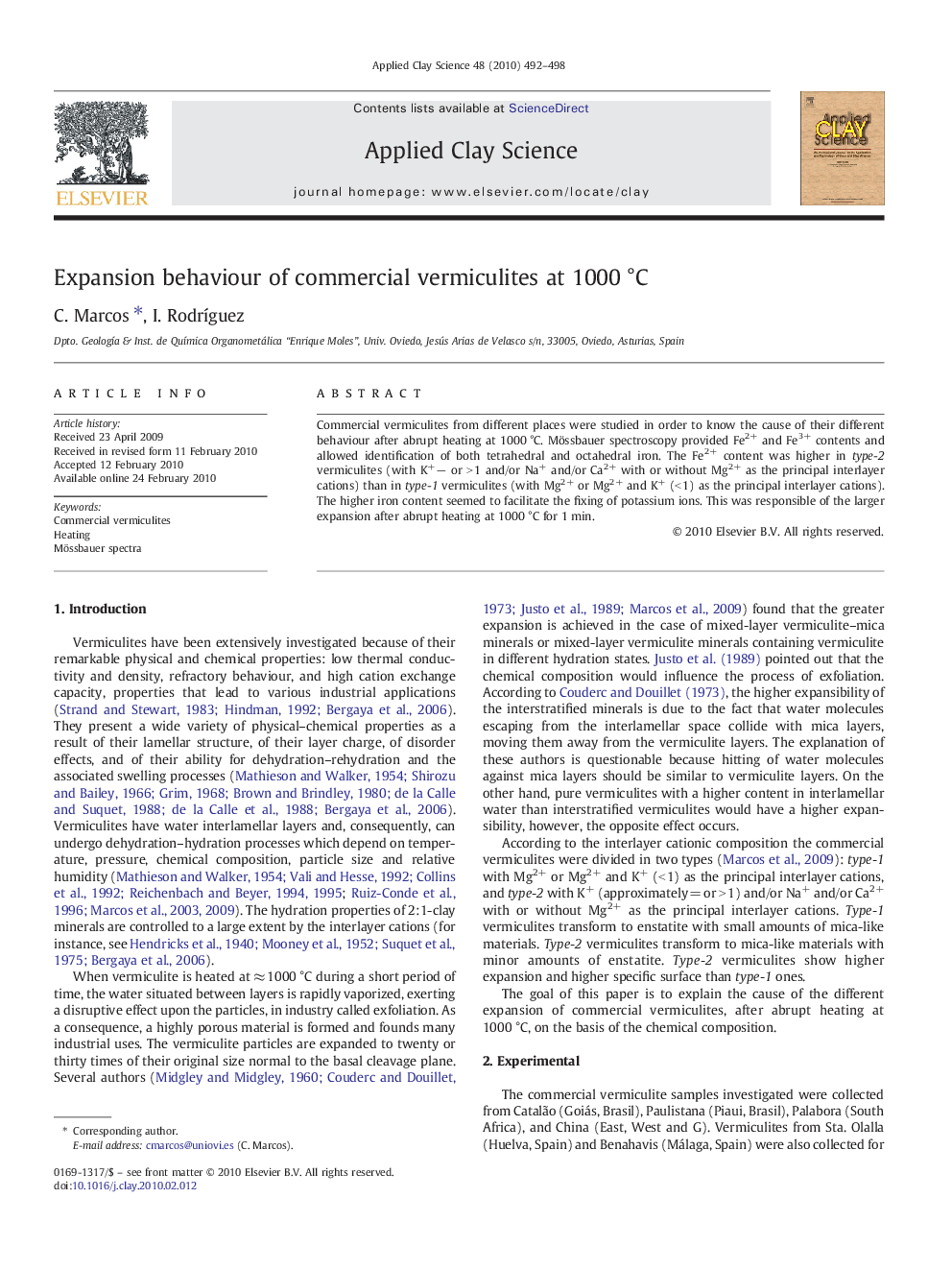| Article ID | Journal | Published Year | Pages | File Type |
|---|---|---|---|---|
| 1696002 | Applied Clay Science | 2010 | 7 Pages |
Abstract
Commercial vermiculites from different places were studied in order to know the cause of their different behaviour after abrupt heating at 1000 °C. Mössbauer spectroscopy provided Fe2+ and Fe3+ contents and allowed identification of both tetrahedral and octahedral iron. The Fe2+ content was higher in type-2 vermiculites (with K+− or > 1 and/or Na+ and/or Ca2+ with or without Mg2+ as the principal interlayer cations) than in type-1 vermiculites (with Mg2+ or Mg2+ and K+ (< 1) as the principal interlayer cations). The higher iron content seemed to facilitate the fixing of potassium ions. This was responsible of the larger expansion after abrupt heating at 1000 °C for 1 min.
Keywords
Related Topics
Physical Sciences and Engineering
Earth and Planetary Sciences
Geochemistry and Petrology
Authors
C. Marcos, I. Rodríguez,
